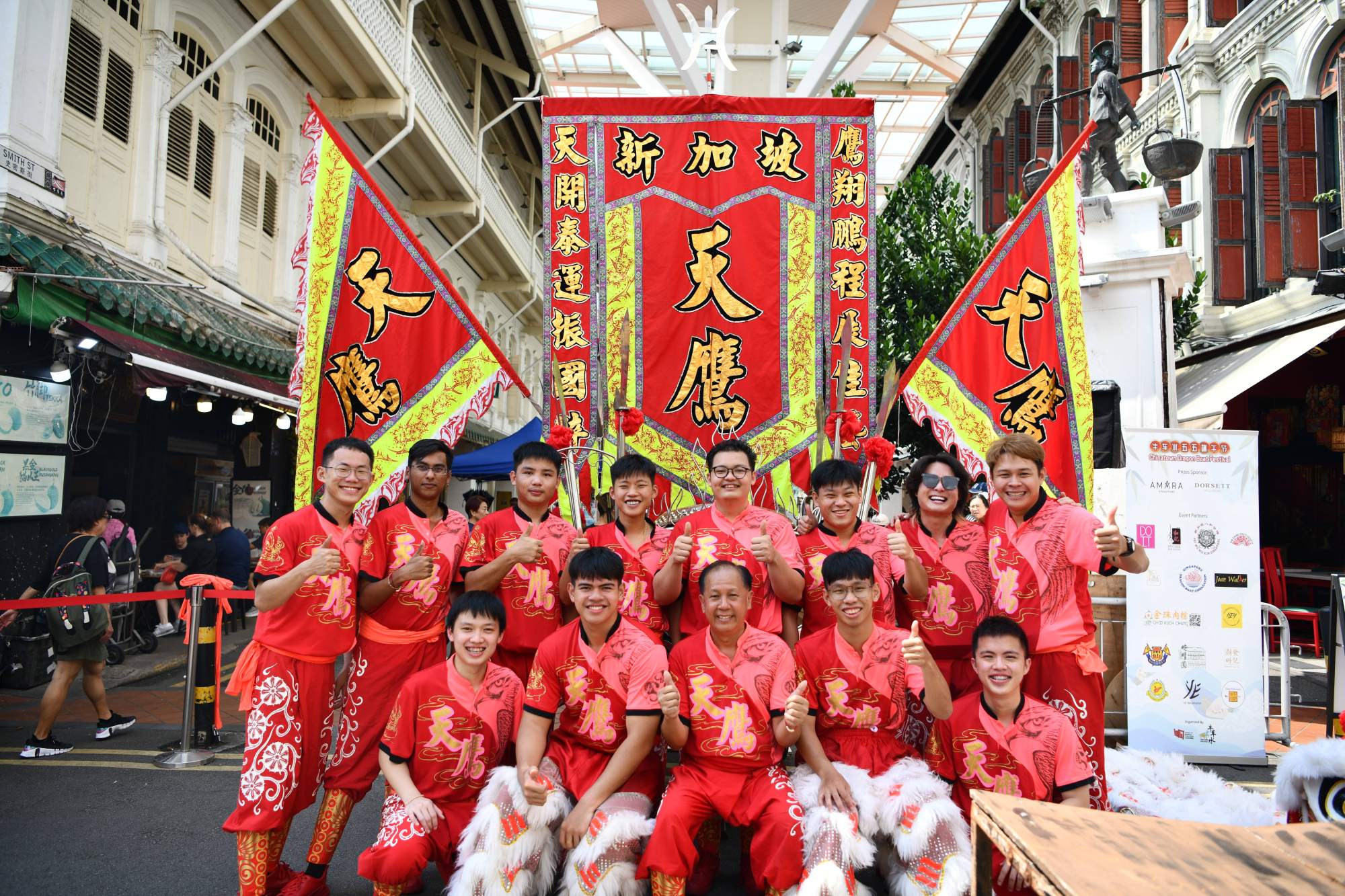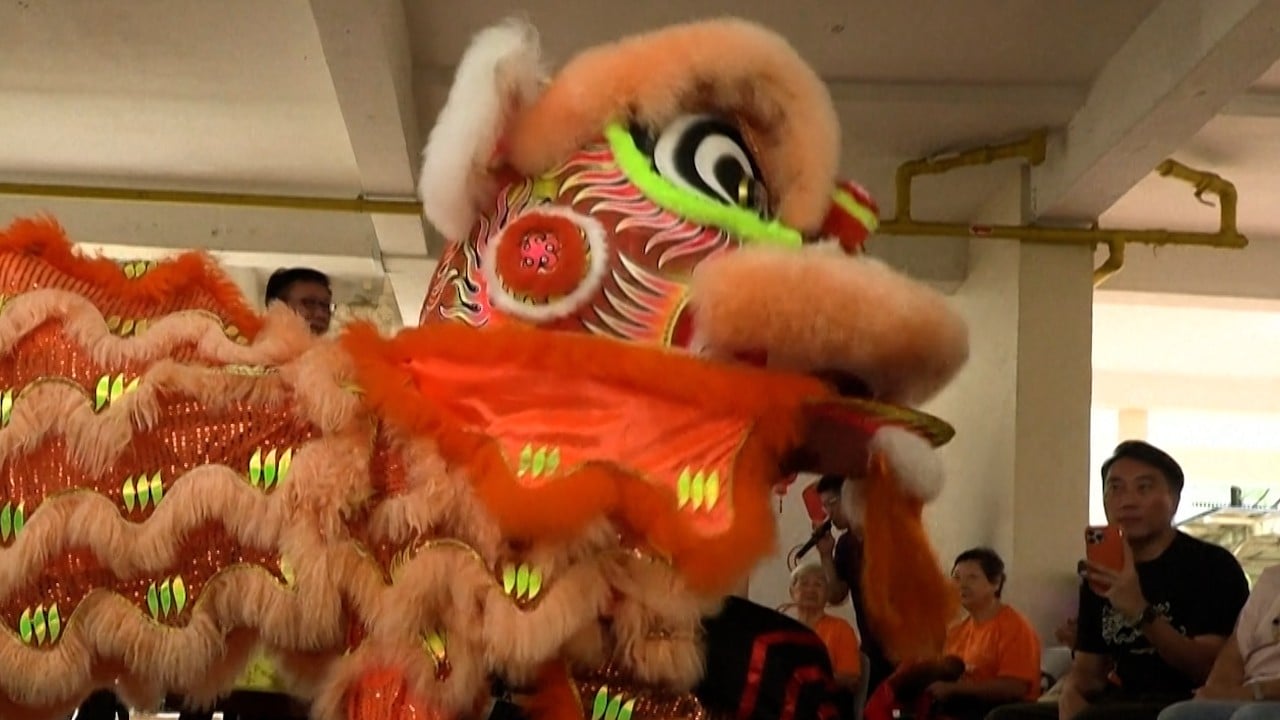Singaporean Bobby Jamsairi has been fascinated with Chinese lion dance since he was just seven, and his passion has even led him to set up his dance troupe more than a decade later.
But unlike most lion dance troupes in the multicultural city state, his 50-strong group, Kuo Chuan Arts Cultural, comprises mostly Malays and is the first of its kind in the Chinese-dominated performance art.
“We have a passion for the sport, so we don’t think about anything else like race,” said Jamsairi, a Malay Singaporean.
While his dance troupe faced a rocky start in its early days, with many potential clients shunning the idea of a predominantly Malay lion dance troupe, Jamsairi said the idea of minority races joining such dance groups was no longer a novelty.
“For many of my boys, lion dance is like a gym session for us and many join us to be a part of a family,” he said.
With a long tradition dating back to imperial China, lion and dragon dances are believed to be able to ward off evil spirits and bring good fortune. Performances by lion dance troupes typically happen during festivals such as Lunar New Year or the openings of new businesses.
Singapore’s resident population of 4 million comprises 74 per cent Chinese, 13 per cent Malays and 9 per cent Indians, with other groups including Eurasians accounting for the remaining 3 per cent.
Another lion dance group, the Namyang Troupe Lion Dance Centre, gained attention on social media after it posted a clip of a prayer for the safety of its troupe members. During the Taoist ritual, the names of several Malay troupe members were uttered in the prayer chant.
The TikTok clip gained more than 140,000 likes and close to 2,000 comments within two days, with many online users praising the troupe for being inclusive.
“Doesn’t matter who you pray to, if you have faith, you’re a child of God. This video is beautiful,” an online user wrote.
“Still better pronunciation than my former teachers,” another said, referring to the pronunciation of Malay names by the priest leading the ritual.
“It’s nice to see people care for each other despite the differences in beliefs,” one online user remarked.
Nicolas Goh, the social media manager of the Namyang troupe, said although the Malay members did not join them in prayer, “we included their names in chants to give them equal protection and blessing”.
“I feel like we have to do our part, since we are mostly made up of Chinese, to make those of other races feel included. They went the extra mile to join something they are not familiar with,” Goh told This Week in Asia in a phone interview.
Four members of the 30-strong troupe are Malay. “But since our schooling days, because of racial harmony celebrations, we’ve always been taught to be inclusive. I think this is one reason why they are also willing to step up in a sense and try [this sport],” he said.
Echoing his sentiment, Daniel Lim, founder of Tian Eng Dragon and Lion Dance Centre, said it was “natural” for members of different races to work together in a Chinese-dominated performance art.
“For Singapore, it is very common. Since young, we already learned to mix around with everyone. We have over 100 members and they’re a mix of Malays, Indians and Chinese,” he said.

Beyond schools, Singapore also has housing policies geared towards promoting multiculturalism. The city state’s Ethnic Integration Policy has been in place since 1989 to allocate racial quotas in each housing estate that broadly reflect the proportions of the different ethnic groups.
The number of dance troupes in Singapore fell from 323 in 2016 to 265 by late 2018, according to the Singapore Wushu Dragon and Lion Dance Federation. This was due to a lack of interest in the tradition among younger people, industry veterans told This Week in Asia previously.
According to Jamsairi, his troupe can earn anywhere between S$488 (US$360) and S$888 per performance, and they typically have five engagements per month.
The path to becoming a lion dancer was challenging as newcomers had to train for three months and about four sessions per week before they could “go pro”, Jamsairi said.
“But if your passion [for the sport] is there, the hard becomes easy. If you put your mind to it, it will be possible.”



